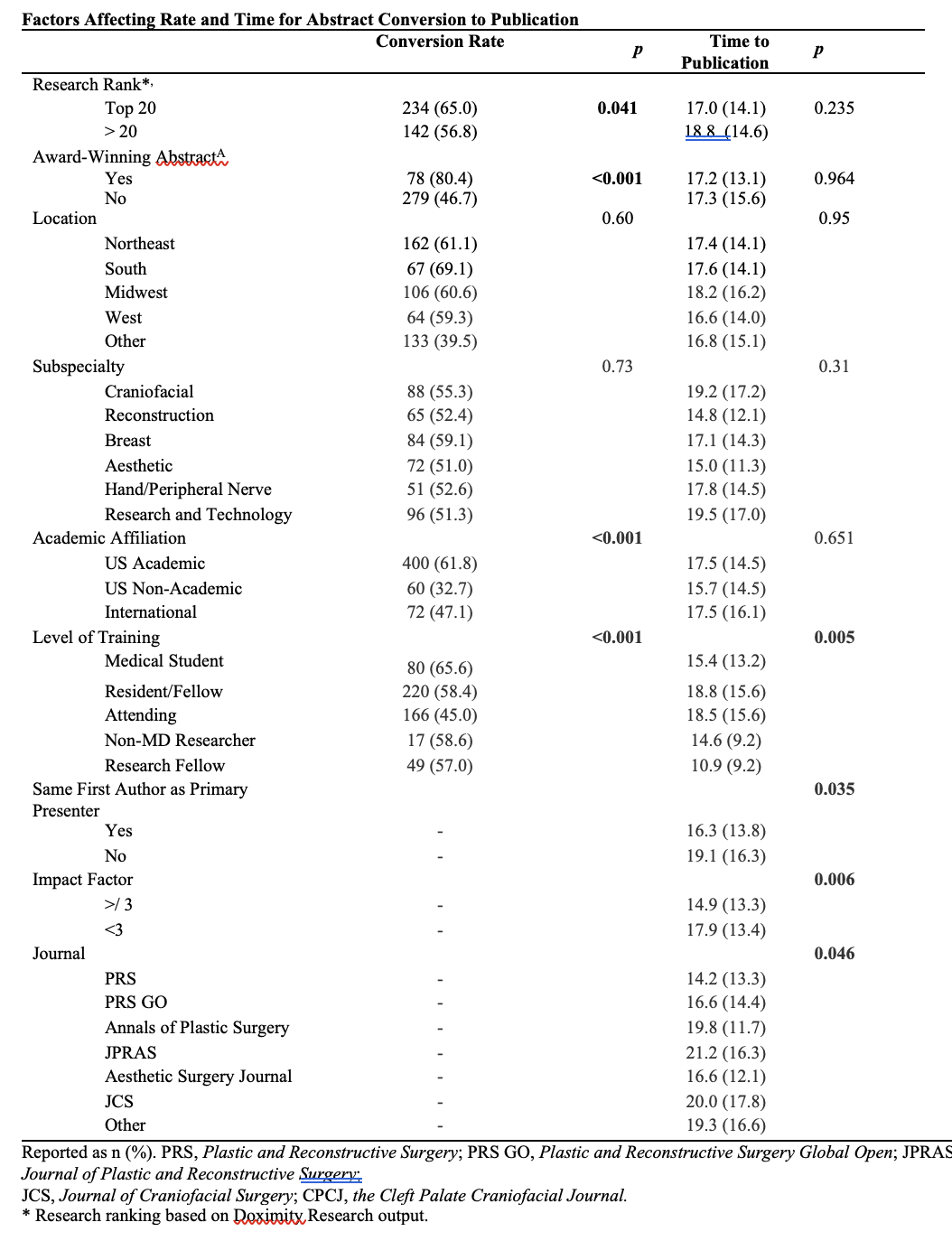Abstract Conversion Rate for Plastic Surgery The Meeting: A 10-Year Analysis of Factors for Success
Neel Vishwanath*, Olivia Cummings, Justin Lim, Shreyas Kulkarni, Nikhil Sobti, Daniel O'Toole, Loree Kalliainen
Department of Plastic and Reconstructive Surgery, Warren Alpert Medical School of Brown University, Providence, RI
Presentations are an important means of knowledge distribution; publication is important for dissemination beyond meetings. We analyzed a 10-year sample of abstracts presented at Plastic Surgery The Meeting (PSTM) and describe factors related to eventual publication in a peer-reviewed journal.
Abstracts presented at PSTM from 2010-2019 were sourced from the ASPS Abstract Archive. A random sample of 100 abstracts from each year was evaluated. If fewer than 100 abstracts were available, all were evaluated. The title or author and keywords of each abstract were used to find a corresponding published paper on PubMed/Google Scholar. Data was analyzed.
983 abstracts were included. Conversion rate was 54.1%, median time to publication was 14 months. There was an increase in the number of medical student and research fellow presenters between the 2010-2014 (7%) vs 2015-2019 (21%) (p<0.01). Medical students had highest conversion rate (66%), attendings had lowest rate (45%) (p<0.01). Presenters from top 20 research programs (by Doximity research rank) had higher conversion rate than individuals associated with a lower-ranked institution/unaffiliated (65% vs 47, p<0.01). Presenters from US Academic institutions had higher conversion rate (62%) than international presenters (47%), and nonacademic US presenters (33%) (p<0.01). Award-winning abstracts had a higher conversion rate (80% vs. 47%, p=0.01). Papers published in high impact journals (IF≥3) were published faster than those in lower impact factors journals (14.9 vs. 17.9 months) (p=0.01). Studies presented by research fellows had shortest time to publication (11.6 months), followed by Non-MD Researchers (14.65), and Medical Students (14.68) (p=0.01). Residents had longest time (18.8).
Successful publication is correlated with lower level of training, increased institutional-level support, and award status; time to publication is associated with level of training, and journal IF. This highlights the success of current practices with medical student and research fellow-led projects having strong resident/faculty mentorship.
Back to 2023 Abstracts


